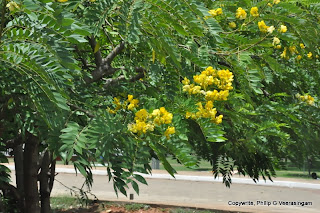 |
| The 'Makara' emblem used to line a stairway of an old building at the site. |
'The makara has the trunk of an elephant, the feet of a lion, the ears of a pig, the body of a fish living in water, the teeth turned outwards, eyes like Hanuman's, and a splendid tail'. -'Mediaeval Sinhalese art' by Ananda K Coomaraswamy (1908)
 |
| Water lily flowers awaiting sale to the devotees. |
 |
| Buds of water lilies. |
 |
| Flowers on a tree in the premises. |



























